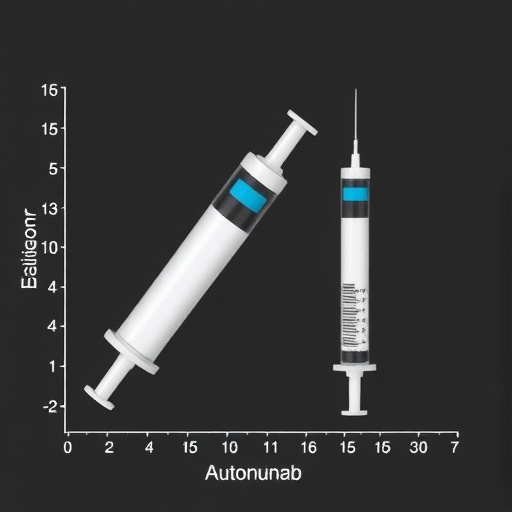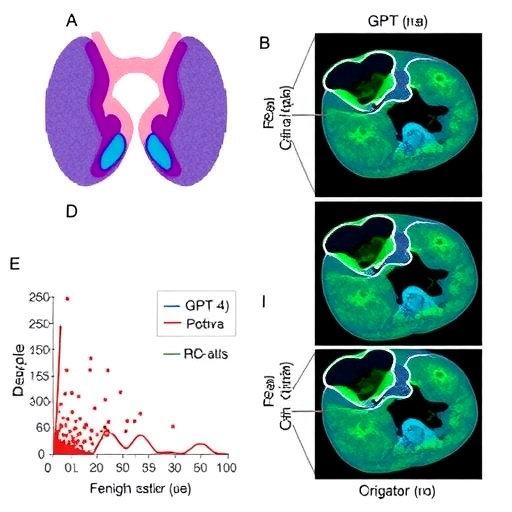
In a groundbreaking study published in “Advances in Therapy,” researchers have delved into the pharmacokinetic properties of Mirikizumab, a promising therapeutic agent. This investigation specifically focuses on the pharmacokinetic bridging between two different delivery mechanisms: the autoinjector and the prefilled syringe. Conducted on healthy participants, the study proposes an essential understanding of how these delivery modes impact the absorption and efficacy of Mirikizumab when administered subcutaneously.
The study’s primary objective was to explore the pharmacokinetics of Mirikizumab, which is an investigational monoclonal antibody designed to inhibit interleukin-23 (IL-23), a cytokine involved in inflammatory processes. Mirikizumab’s potential in treating various autoimmune diseases, such as psoriasis and ulcerative colitis, has garnered significant attention. Understanding the pharmacokinetic profile through different delivery methods can provide valuable insights into optimizing its therapeutic efficacy and safety.
Pharmacokinetics is a critical component of drug development that examines how the body absorbs, distributes, metabolizes, and excretes a drug. By performing pharmacokinetic bridging, researchers aim to demonstrate that the two delivery systems yield comparable pharmacokinetic profiles, thereby confirming the interchangeability of the formulations. This is essential for regulatory approval and ensuring that patients receive consistent therapeutic outcomes regardless of the delivery system used.
In this pivotal study, the researchers conducted a randomized, open-label, two-period, two-treatment crossover trial. Healthy participants received Mirikizumab via both an autoinjector and a prefilled syringe. The design enabled the researchers to compare the pharmacokinetic profiles in a controlled manner, thus establishing a more robust understanding of the drug’s behavior in the human body across different administration routes.
The pharmacokinetic parameters measured included the maximum concentration (Cmax) and the time to reach this concentration (Tmax), along with the area under the curve (AUC), which represents the drug’s exposure over time. Such measurements are crucial as they not only indicate the drug’s absorption but also inform on the dosing strategies needed for effective treatment while minimizing adverse effects.
With the prevalence of self-administration through autoinjectors on the rise, this study has significant implications. Patients often prefer devices that allow for ease of use and comfort. If pharmacokinetic profiles align closely between the autoinjector and prefilled syringe, healthcare professionals could confidently recommend either option based on patient preference without compromising therapeutic efficacy.
Moreover, the study highlights the importance of patient education in self-administration. As multidose regimens advance in complexity, ensuring that patients are well-informed about their treatment options continues to be paramount. The prospect of using an autoinjector might enhance adherence, given its user-friendly design, potentially leading to improved health outcomes, particularly in chronic conditions requiring long-term management.
The implications of these findings extend to the broader field of biologics and monoclonal antibodies. As the development of biosimilars and biobetters continues to evolve, understanding how delivery mechanisms impact pharmacokinetics will be crucial. Such knowledge plays a pivotal role in the design and optimization of these therapies and reinforces the necessity for studies like this to inform future developments.
Further investigation is warranted, especially in diverse populations, including those with varying health conditions that may affect pharmacokinetics. Understanding how factors such as age, weight, and comorbidities impact drug absorption and metabolism will continue to shape individualized treatment approaches moving forward.
The partnership between pharmaceutical companies and researchers in investigating these parameters not only enriches the scientific community’s understanding but also ensures that patients receive safe and effective therapies tailored to their needs. As novel therapies enter the market, such collaborations will be pivotal for advancing the science of personalized medicine.
As the landscape of therapeutic agents continues to shift with the advent of new technologies and treatment modalities, studies like these emphasize the need for rigorous evaluation of drug delivery systems. This ensures that both healthcare providers and patients can make informed decisions regarding treatment options while maintaining confidence in their efficacy and safety.
In conclusion, this study contributes significantly to the understanding of Mirikizumab’s pharmacokinetics, drawing attention to the importance of establishing pharmacokinetic bridges between different delivery forms. As the medical community strives for advancements in treatment options, this research will not only guide clinical decision-making but could also pave the way for future therapeutic innovations in managing autoimmune diseases.
Subject of Research: Pharmacokinetic analysis of Mirikizumab using different delivery systems.
Article Title: Pharmacokinetic Bridging Between an Autoinjector and a Prefilled Syringe Following Subcutaneous Administration of Mirikizumab in Healthy Participants.
Article References: Zhang, X., Otani, Y., Payne, C.D. et al. Pharmacokinetic Bridging Between an Autoinjector and a Prefilled Syringe Following Subcutaneous Administration of Mirikizumab in Healthy Participants. Adv Ther (2025). https://doi.org/10.1007/s12325-025-03335-z
Image Credits: AI Generated
DOI:
Keywords: Pharmacokinetics, Mirikizumab, Autoinjector, Prefilled Syringe, Monoclonal Antibody, Inflammatory Diseases, Drug Absorption.
Tags: autoimmune disease treatmentautoinjector vs prefilled syringedrug absorption and efficacyhealthy participants pharmacokinetics studyinterleukin-23 inhibitionMirikizumab pharmacokineticsmonoclonal antibody delivery methodspharmacokinetic bridging studypsoriasis and ulcerative colitis treatmentregulatory approval for drug formulationssubcutaneous administration of Mirikizumabtherapeutic efficacy optimization




